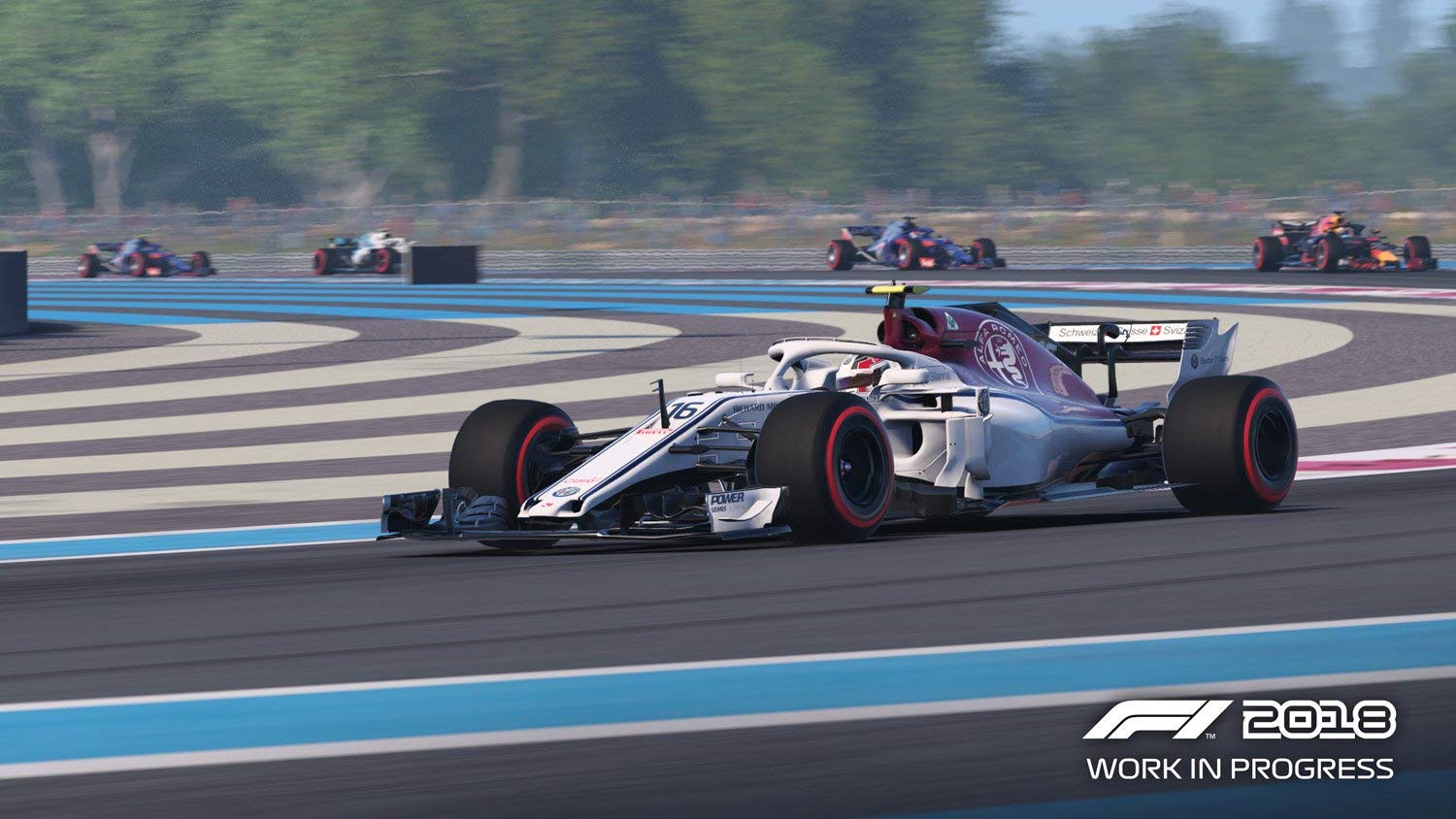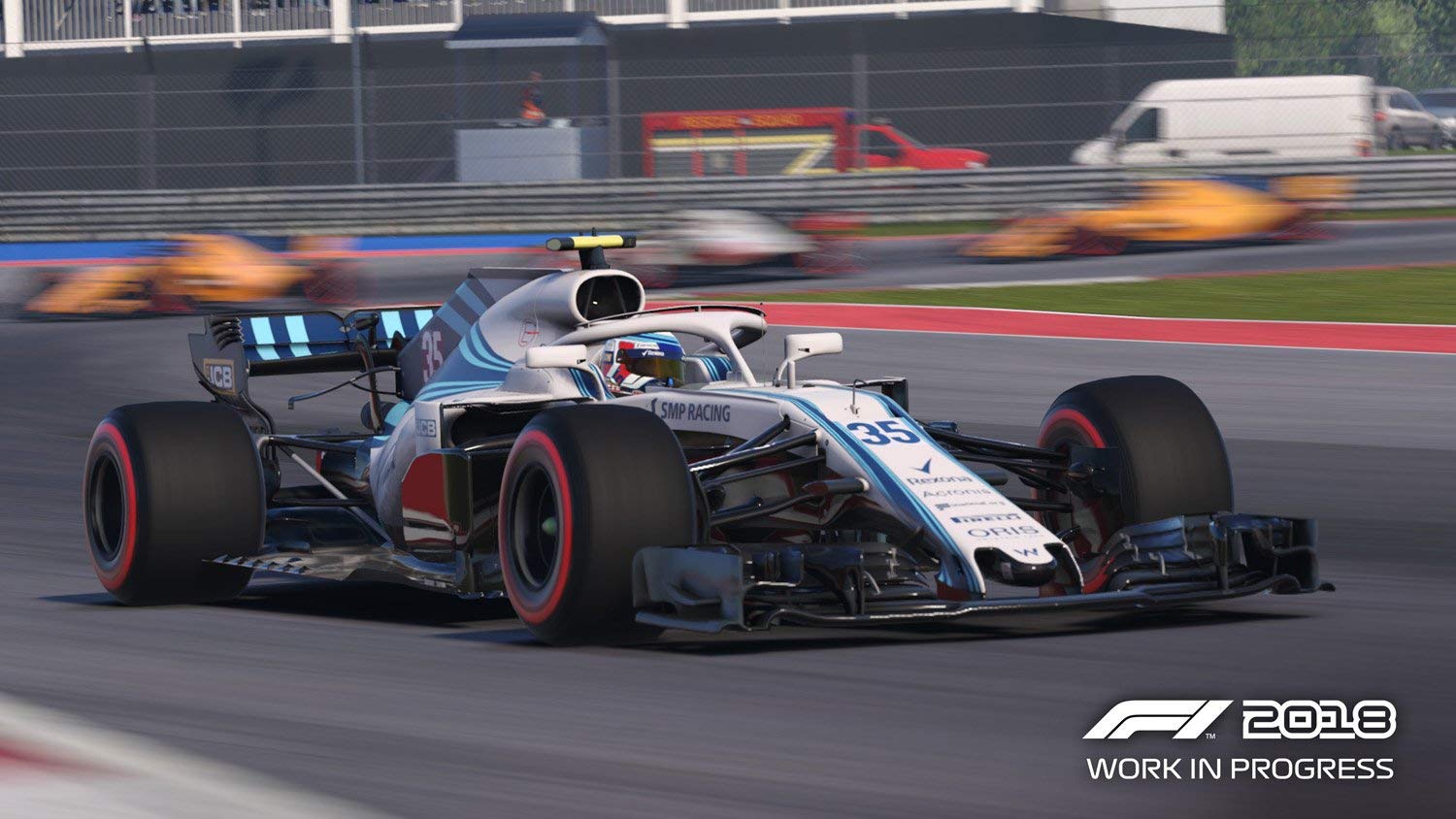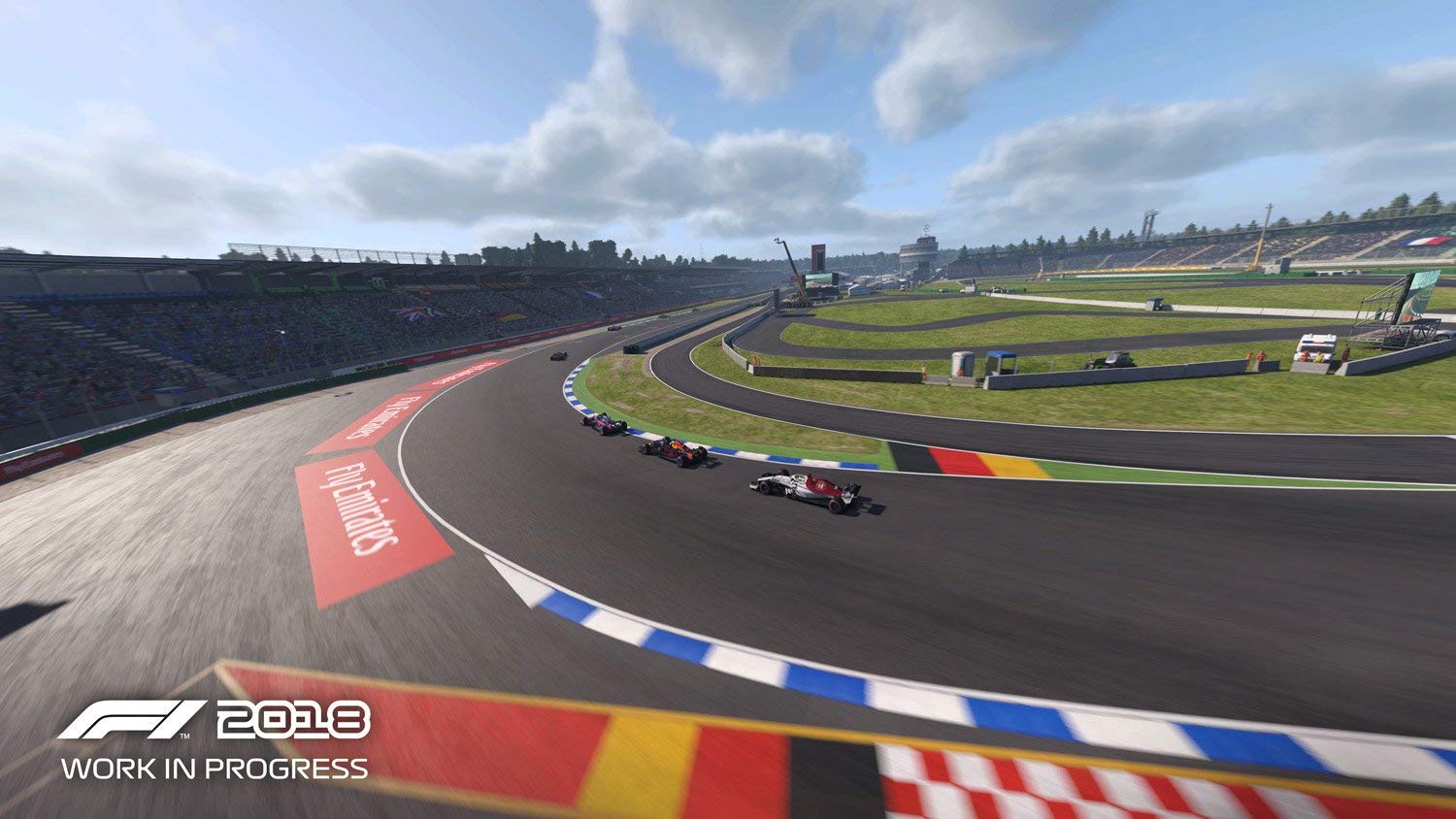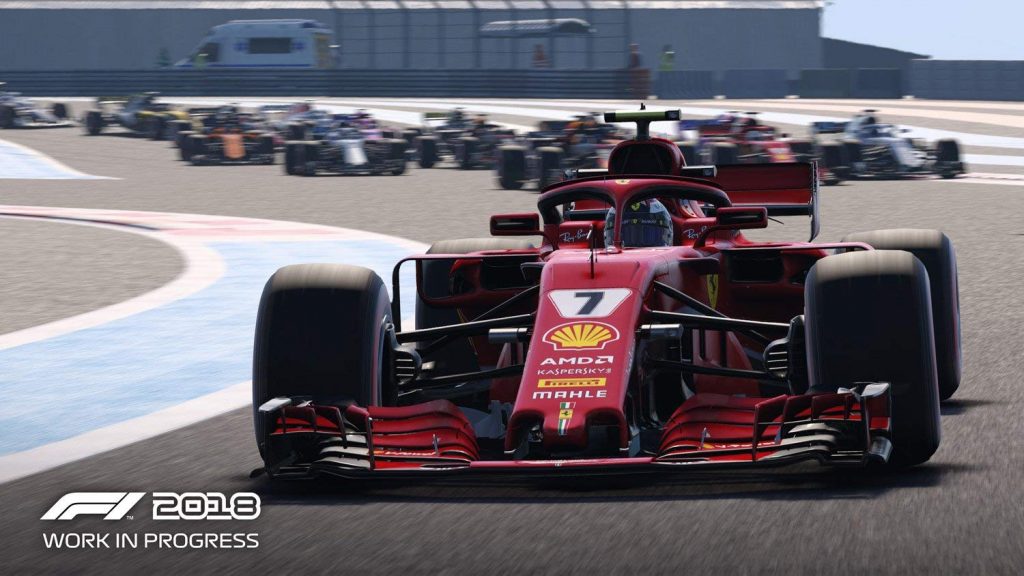The officially licensed Formula One games by Codemasters have, somewhat unexpectedly, been some of the best and most faithful video game sports titles in recent memory. With a combination of passion, dedication and good old-fashioned development knowhow, each successive F1 title iterates on the last, creating a series that’s true to its source material without sacrificing enjoyment on the altar of authenticity.
[amazon_link asins=’B07D89T5K8|B07D3BGQFZ|B07D2XCJ5M|B07D8HHNKJ’ template=’ProductAd’ store=’ps4playstation-20|ps4072-21|ps4homecom-21|ps4home-20′ marketplace=’US|UK|DE|CA’ link_id=’463cd5fd-9f42-11e8-8c7d-75c58584af14′]
Developers Codemasters might be triple-A contenders, but they treat their games (and their audience) like indie developers, constantly asking for and implementing feedback based on what players and professionals alike want to see from them. As an example of Codemasters’ willingness to listen to fans (and themselves), a car development feature was added for the 2016 instalment of the game (unlike many of EA’s sports franchises, F1 names itself based on the year it’s released, not the year following) and iterated on in the 2017 version based on player and dev feedback.
This year’s F1 title is shaping up to be the best yet, though. Thanks to a host of improvements and upgrades to the game’s career mode, as well as some under-the-hood AI tweaks and refinements to the aforementioned development system, the 2018 edition of F1 looks like it’s gonna be a real success story. There’s a whole lot of content incoming in F1 2018, so we thought we’d have a look at some of it and how it’s going to affect the game as a whole.

First off is the new Career mode. This mode has been redesigned from the ground up due to complaints that the car development mode in F1 2017 was too involved and difficult to understand. Essentially, in F1 2017, the player could make modifications and improvements to their car such as upgrading components and improving aerodynamics. Codemasters surveyed their player base and found that players were giving up before their car’s development cycle was complete, largely due to the complexity of the system.
As such, F1 2018 will feature a new resource called “development points”. Development points in F1 2018 can be earned by meeting R&D targets as players embark on free practice sessions. If you’re not an F1 devotee, free practice sessions are essentially trial runs in which drivers test the responsiveness and functionality of their vehicle before competition begins.
In order to complement the new development point system, F1 2018 will also feature a more expanded range of free practice programs, which will allow players to fine-tune their vehicle and understand exactly what they want from it. It’s Codemasters’ hope that the new free practice extras will also extend the longevity of the game for players; after all, this game is intended to last for at least a year, depending on whether an F1 2019 will eventually arrive (it looks likely, but we never assume).

Once each championship in F1 2018 reaches its halfway point, players will be given the option to end their car’s development cycle and bank all development points earned from that point onward to be used in a future championship. This is to increase the realism of the game; Codemasters’ Lee Mather told Autosport that dominant teams “change predominantly when the rules change”, so rules changes were an important part of increasing the verisimilitude of F1 2018 compared to previous instalments. If players protect their car’s existing upgrades, they could start the next championship with a stronger car.
That’s not all, though. The AI has been significantly improved from F1 2017. Each team in the championship will feel distinct, and will undergo the same research and development processes as the player does. The AI will need to make the same decisions, too; as championships end and rules changes come into effect, the AI will need to bank their development points just like players do, and if the teams make the wrong decision, then they could start the next season with a worse car. Codemasters says that “the actual grid order can be vastly different” in each F1 season, and this is a feature the developer sought to replicate in F1 2018.
If all this is sounding like too much of a departure, then don’t worry; although many features are being redesigned from the ground up, F1 2018 will still have a veritable cornucopia of Formula One-related stuff for the dedicated fan. Classic Cars make a reappearance, including James Hunt’s 1976 McLaren M23 and Niki Lauda’s Ferrari 312T from the same year. All Classic Cars from last year’s F1 2017 will be included in the new game, so if there’s a particular point in history you love revisiting, rest assured it’ll be present and correct in this year’s game.

Some course shake-ups are also coming to F1 2018. The Sepang International Circuit has been removed from the Formula One calendar, so it won’t be present in the game. Joining the course roster for the first time is the Circuit Paul Ricard, which is featured in the 2018 championship. The Hockenheimring, which hasn’t been seen since F1 2016, will make a return to F1 2018. Codemasters worked hard to include all twenty drivers, all ten teams and all twenty-one circuits from the 2018 championship, so this really is the most authentic, true-to-life version of Formula One you could hope for.
F1 2018 will be released on August 24th. We know we’ll be picking up our copy on the day.
This post didnt have a specific author and was published by PS4 Home.

